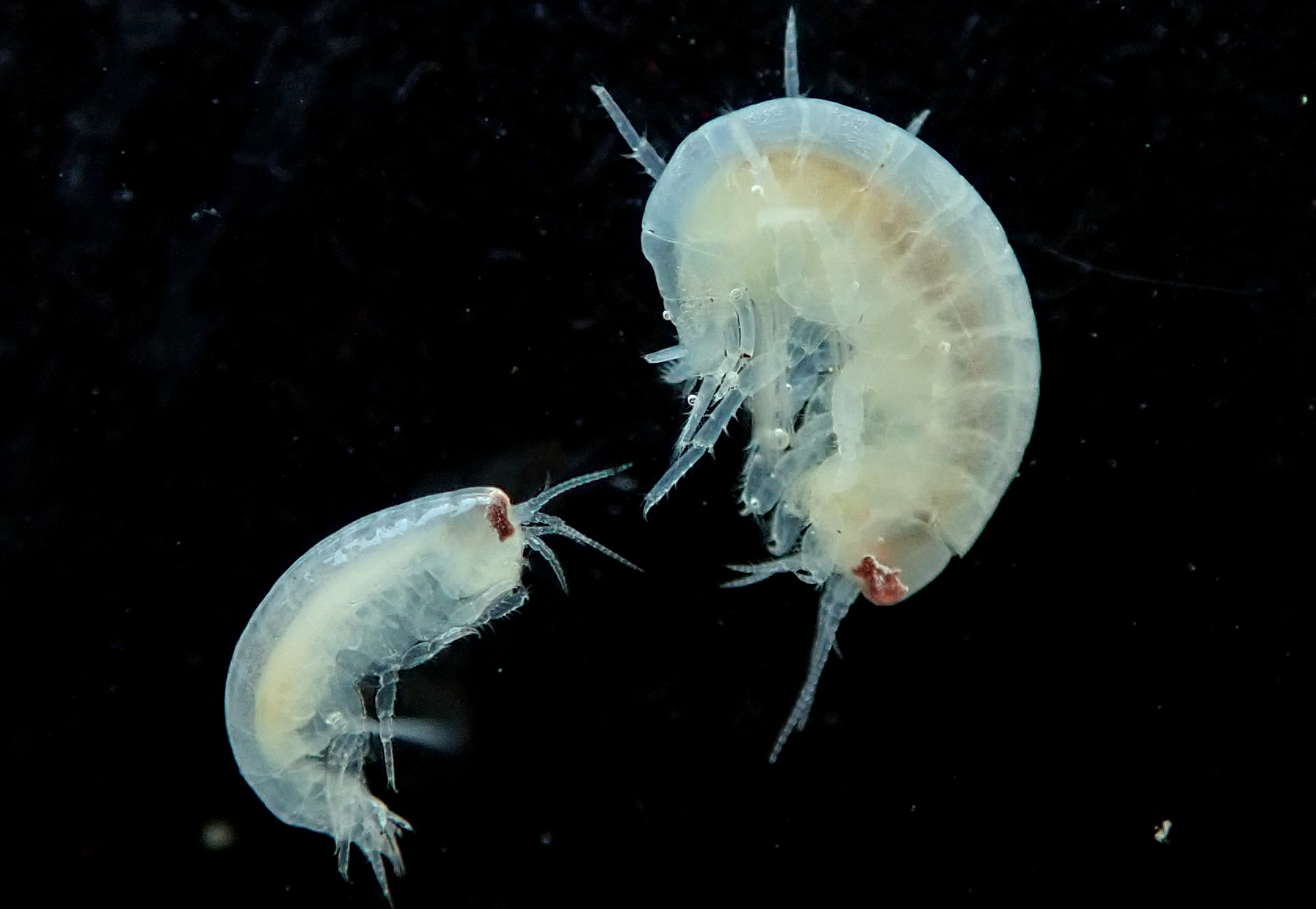Imagine a world of constant darkness, cold and silence. A kingdom on the bottom of the deepest lake of the planet where the sunlight doesn’t reach. Seems no one can live here. But that isn’t true. Deep down in the waters of the lake Baikal thrives a unique life, the main characters of which are the two unbelievable crustaceans: the pale Ommatogammarus albinus and the yellowish Ommatogammarus flavus. ISU Research Institute of Biology researchers looked into the mystery of their existence and published the results of this research in the prestigious international journal Diversity (Q1) that is included in the first level of the “White list” of the Higher Attestation Commission.
Crustaceans metamorphosis
These crustaceans are the true cleaners of the lake Baikal. They patrol its littoral, eating everything that sinks. But their exterior can be misleading. Testing the samples from different depths, the scientists noted that the orange crustaceans O. Flavus, caught at the depth over 650 meters, lost their colour and became pale, almost indistinguishable from their neighbours O. Albinus. Where did the pigment go?
Polina Drozdova, leading researcher at ISU Research Institute of Biology, Candidate of Biological Sciences:
The situation was cleared by the biochemical analysis. Turns out that the reason is the carotenoids, pigments that the crustaceans receive from the food. They not only colour the crust, but also protect from the UV light. Deep down where there’s no sun, hence no necessity for this “armour”.
But what’s even more fascinating is their eyes: these deepwater habitants got their own “sunglasses”. The shallow water O. flavus has black eyer, while the deepwater ones have red. This corresponds with red and pink eyes of the O. Albinus. Consideting the obvious importance of the vision for the crustaceans, we can suppose that the additional pigment of the samples from the layer of water that has some sunlight helps to protect the light-sensitive cells from the damage of the UV light. This unique mechanism of protection of the light-sensitive cells in the harsh Baikal conditions.
Genetic Mystery
The biggest surprise for the scientists was in the results of the genetic analysis. Both types of the crustaceans shown the same low genetic variety, a sign that their ancestors survived a demographic catastrophe in the past, a sharp decrease in numbers, so all the modern population is coming from the low number of the survivors.
This discovery opened a new mystery. In particular, the question on the reason of formation of two different but so similar in ecological features of the species. The researchers suppose that the two species could form in the different basins of the lake and meet later, when they became different enough for the crossbreeding to become impossible.
Besides, in spite of the same genetic “paucity” and cohabitation on the same depth, the O. flavus store the carotenoids, and the O. albinus don’t.
The reason might lie in the diet. It might be that O. flavus is a gourmand that likes the microalgae rich in carotenoids, and O. albinus is an ascetic scavenger. It also might be that their metabolism processes the same pigments differently. Thus, the food preferences might have become the barrier that separated one species in two millions of years back.
This study is an intermediate stage of a big work supported by a grant of the Russian Science Foundation. ISU scientists only start to unravel the evolutionary mystery hidden in the depths of the most ancient lake on Earth. One thing is clear: lake Baikal keeps surprising the scientists, and its deepwater habitants keep a lot of secrets.
















